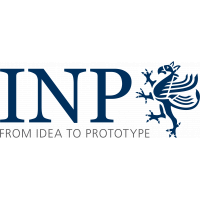The dataset contains data from comparative studies of capacitively coupled radio-frequency (CCRF) discharges in helium and argon at pressures between 10 and 80 Pa applying two different fluid modeling approaches as well as two independently developed particle-in-cell Monte Carlo collision (PIC-MCC) codes. The dataset provides a test bed for future studies of simple ccrf discharge configurations in helium and argon at pressures ranging from 10 to 80 Pa.
| Field | Value |
|---|---|
| Group | |
| Authors | |
| Release Date | 2019-06-14 |
| Identifier | 60dbcdd4-8be4-4f41-896c-e725bdb37fe2 |
| Permanent Identifier (DOI) | |
| Permanent Identifier (URI) | |
| Is supplementing | |
| Plasma Source Name | |
| Plasma Source Specification | |
| Plasma Source Properties | Low-pressure RF plasma between plane electrodes separated by the distance d, driven by a sinusoidal voltage with amplitude V0 and frequency f; d = 2.5 cm (argon) resp. 6.7 cm (helium); V0 = 50-250 V; f = 13.56 MHz; Current density: 10 A/m^2 |
| Plasma Medium Name | |
| Plasma Medium Properties | Gas temperature: 300 K; Pressure: 10-80 Pa |
| Plasma Diagnostics Name | |
| Plasma Diagnostics Properties | The fluid description of the electron component is performed by means of two different drift-diffusion approaches: the novel drift-diffusion model DDAn introduced in Becker and Loffhagen 2013 (https://doi.org/10.1063/1.4775771) and the commonly used classical drift-diffusion model DDA53 using simplified electron energy transport coefficients. Details of both fluid modelling approaches are given in Becker et al. 2017 (https://doi.org/10.1088/1361-6595/aa5cce). For ions, a time-dependent two-moment model is applied. It takes into account the continuity equation and the momentum balance equation, see Becker et al. 2017 for details. In addition to the fluid modeling approaches, two PIC-MCC simulation codes were developed independently and are applied for mutual verification and benchmarking of the different fluid models for the parameter range considered. Details of the PIC/MCC simulation procedures as well as used cross sections and other input data are given in Becker et al. 2017. |
| Language | English |
| License | |
| Public Access Level | Public |
| Contact Name | Becker, Markus M. |
| Contact Email |
Data and Resources
- Benchmark data for CCRF discharge plasmas - time averaged ion density (argon, 20 Pa)csv
This data table includes the time-averaged ion density profiles between the...
Preview Download - Benchmark data for CCRF discharge plasmas - time averaged ion density (argon, 40 Pa)csv
This data table includes the time-averaged ion density profiles between the...
Preview Download - Benchmark data for CCRF discharge plasmas - time averaged ion density (argon, 80 Pa)csv
This data table includes the time-averaged ion density profiles between the...
Preview Download - Benchmark data for CCRF discharge plasmas - time averaged ion density (helium, 10 Pa)csv
This data table includes the time-averaged ion density profiles between the...
Preview Download - Benchmark data for CCRF discharge plasmas - time averaged ion density (helium, 20 Pa) csv
This data table includes the time-averaged ion density profiles between the...
Preview Download - Benchmark data for CCRF discharge plasmas - time averaged ion density (helium, 40 Pa)csv
This data table includes the time-averaged ion density profiles between the...
Preview Download - Benchmark data for CCRF discharge plasmas - time averaged ion density (helium, 80 Pa)csv
This data table includes the time-averaged ion density profiles between the...
Preview Download

![[Open Data]](https://assets.okfn.org/images/ok_buttons/od_80x15_blue.png)